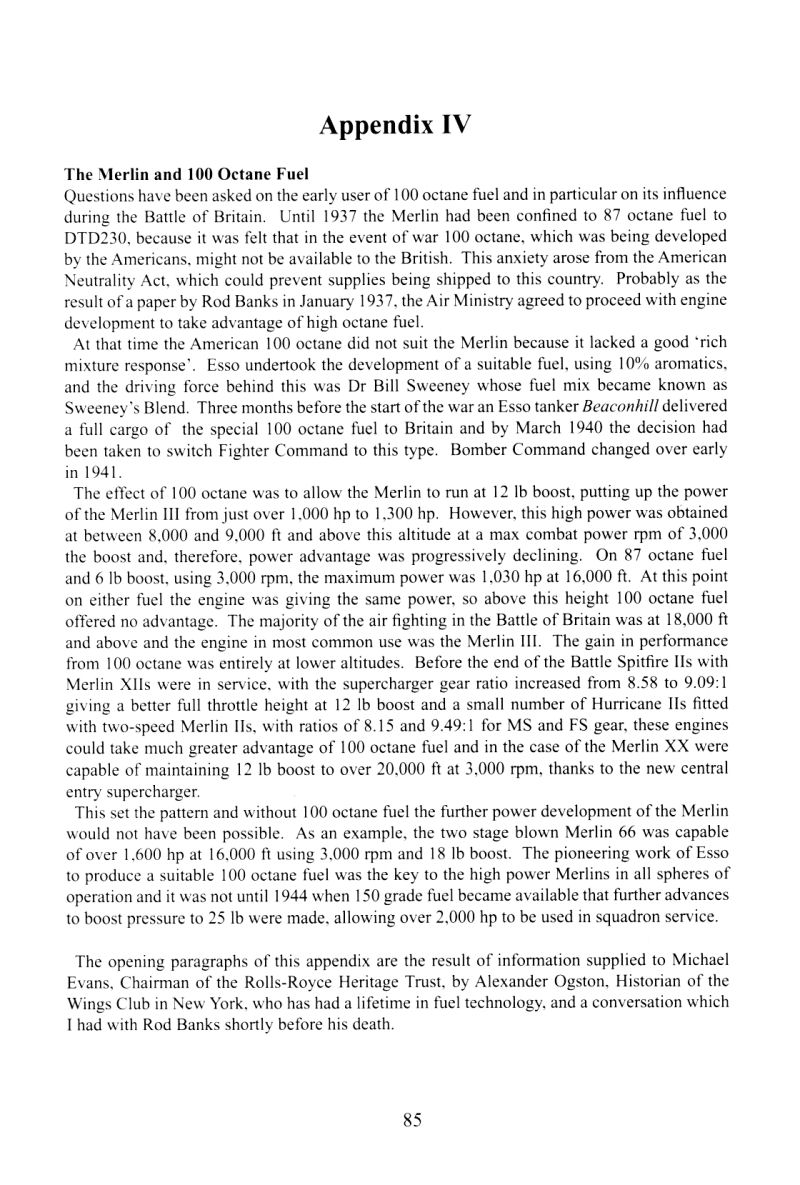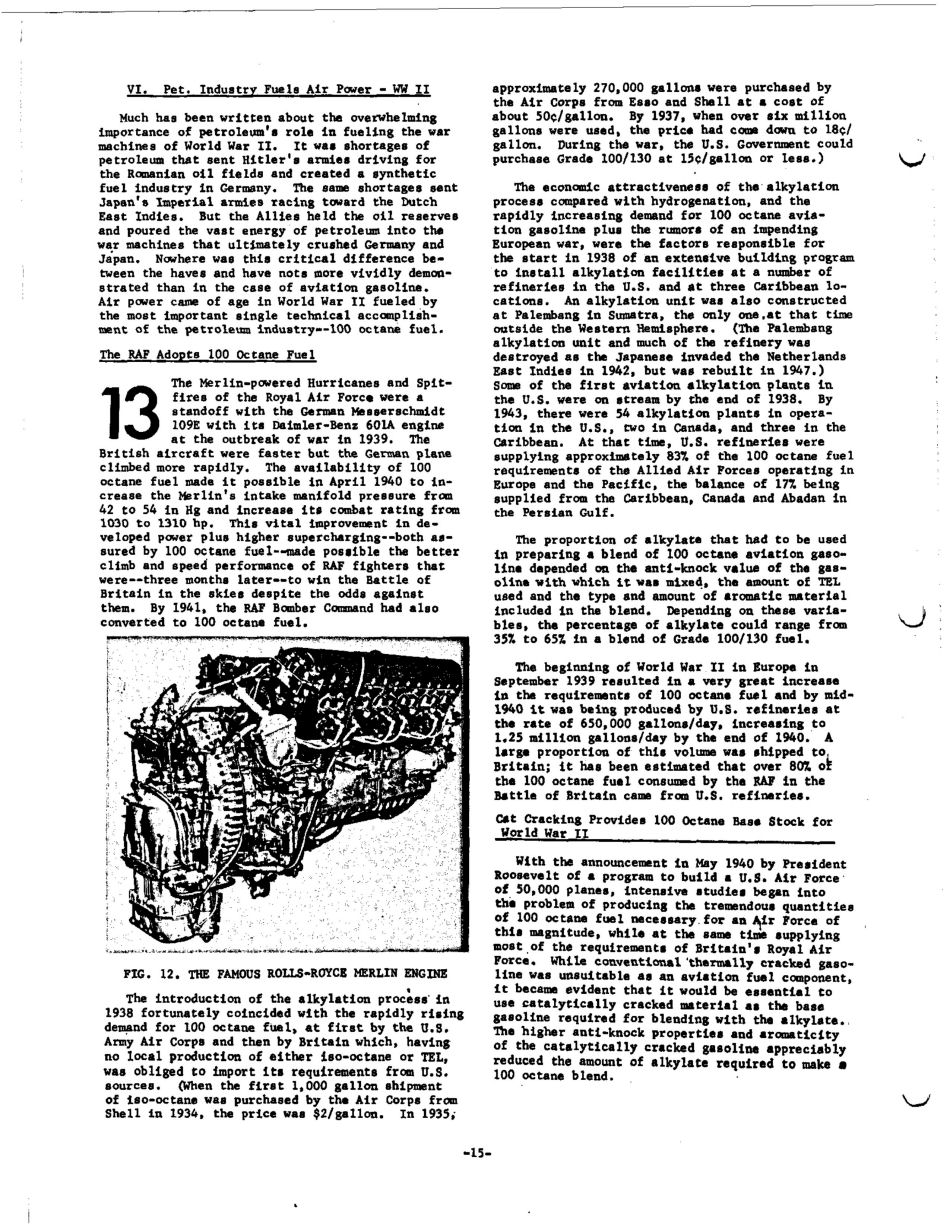Alec Harvey-Bailey, The Merlin in Perspective, (Rolls-Royce Heritage Trust, Derby, 1983)

W.G. Dudek and D. R. Winans, excerpt from AIAA Paper No. 69-779, Milestones in Aviation Fuels, (Esso Research and Engineering Company, New York 1969.)

A. R. Ogston, excerpt from History of Aircraft Lubricants (Society of Automotive Enginees, Inc. Warrendale, PA USA), p. 12.

1)The authors of these articles are respected engineers and fuel technicians who are properly qualified to know how much power the Merlin III could generate on 100 octane fuel.
2)Rolls-Royce were already building Merlins that could run on 100 octane fuel in
1938.
http://www.flightglobal.com/pdfarchi...0-%203453.html RM 2M "The normal output at 7,870ft. is 1,265 h.p. and the maximum at
9,500ft., 1,285 h.p. with 1,320 h.p. available for take-off....
The maximum potential output of the Merlin II is 1,800 h.p..."
3) Not forgetting either that on August 7 1937 Rolls Royce had a "more-or-less standard Merlin II, running at 18 pounds boost on a special mixture of straight-run gasoline, benzol and methanol with a dash of tetraethyl lead, achieved an output of 1,536 hp at 2,850 rpm over a four minute run." (this was used for the Speed Spitfire). Price The Spitfire Story 2010 p. 107. Ergo the engine was already strong enough to take the extra power.